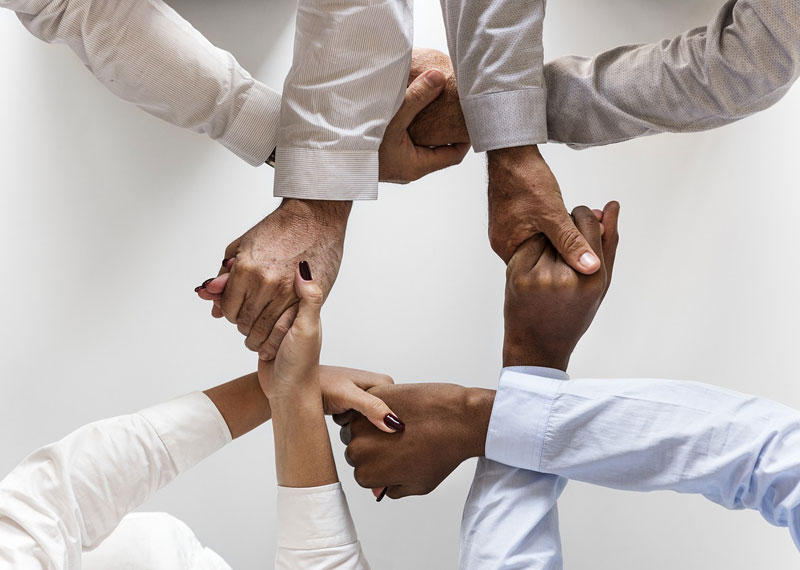Intersectionality is one of the most important ways to help support diversity, inclusion and equality according to leadership experts, so why is labelling at work still such a problem?
Intersectionality relates to how different parts of our identity merge and how this influences our interactions with the world, as well as how the world interacts with us. Our age, race, class, ethnicity, gender, sexual orientation, as well as other social factors related to work and home life are often used to define us, but these and other labels at work are continuing to increase discrimination and divide us.
International D&I facilitator, speaker and coach, Gamal Turawa, who prefers to be called G, explains how his upbringing influenced his passion for awareness around intersectionality.
“I was born in the early sixties to an authoritarian Nigerian father and a Jamaican mother but fostered by a white middle class family in Kent. Later in life I joined the police and came out as theUK’s first openly gay black police officer. These multiple marginalised identities could contribute to how I identify myself; I could just be a survivor of being in a minority rather than a thriver, for example. Worse still, these identities also impact how people define me.
“People assign a label to you or put a cross next to a box to describe you before you even open your mouth. When you cross several boxes, you become difficult to manage because people aren’t sure what to do with you. This opens up ways for people to suffer multiple levels of discrimination. For instance, I felt I was not openly able to say I’m black and gay for forty years because I was scared about how people would react and the impact it might have. We are multi-layered and complex, and categorising people as ‘this’ or ‘that’ means we miss out on the richness of who they are.”
Thom Dennis, CEO of Serenity in Leadership, agrees and says: “Everyone’s identity is multifaceted. I am a man, white, a grandfather, a survivor of abuse, a son, a leadership facilitator and an ex-marine amongst many other things and intersectionality encompasses all of these identities. Society creates definitions in an attempt to understand diversity and to compartmentalise to satisfy a need for order, but this can actually make people feel even more like outsiders especially if they fall into a marginalised category. You don’t describe a white person as white so why do we describe someone as black? We don’t describe a straight person as straight so why are people labelled gay?”
HOW DOES INTERSECTIONALITY IMPACT WORK?
Labelling and a lack of awareness of intersectionality is at the root of many conflicts, prejudices, and lack of inclusion at work. Thom Dennis and G urge business to look at employees as unique individuals and to divert from a ‘one size fits all’ or a ‘box ticking’ mentality. Thom says: “Putting employees in specific boxes can lead to them missing opportunities or not being considered for them because it is believed that they do not fit the right mould.”
G agrees: “Companies need to celebrate the rich and diverse talent they have within their team. That richness is a gift. Although no one should have to experience prejudice, experiencing adversity means you have had the opportunity to feel and gain unique knowledge.”
As labelling and discrimination continue to persist in the workplace, what can business do to make a difference? Thom Dennis and G suggest five ways businesses can un-label.
- Think about Insider / Outsider dynamics. Systematically and systemically address unconscious biases and accept identity is complex. Managers should dissolve pre-wired thinking about who is in our tribe and who is not and celebrate and value differences without the need for labels. Seeing people as unique and that one size doesn’t fit all really helps. Clamping down on outsider-ism and offering opportunities to all is key, even when interacting socially at work.
- When you know you don’t know, stop making assumptions. Be curious, not judgemental and don’t make assumptions. It’s ok to ask questions about someone’s identity if you are coming from a genuine place. Stay curious, courageous and keep the conversations going. Training and open conversation help to educate us. Openly verbalise your intention that you want to understand better.
- It’s not about quick solutions, it’s about progression. While it’s good to have some solutions on hand to help maintain and celebrate diversity in the workplace, we know from the ongoing pandemic that anything can happen to throw all plans out of kilter. Focus on the progression you are making rather than how to fix the problem quickly by applying a plaster. It’s about being able to evolve with openness and transparency and long term thinking and application.
- Recognise that negative feelings are part of the process. Feelings of fear, shame, anger, frustration and embarrassment are all part of the process, and avoiding them stunts individual and company growth. Recognise and sit with these feelings rather than bottling them up and use the experience for learning and development.
- Think outside the box. D&I policies encourage collecting employee data related to social factors such as race, ethnicity, gender etc. Whilst this is an effective method for interpreting the diversity of a company overall, it is important not to get fixated on these labels. When we use such data to understand an individual employee, it takes away from who they are.











